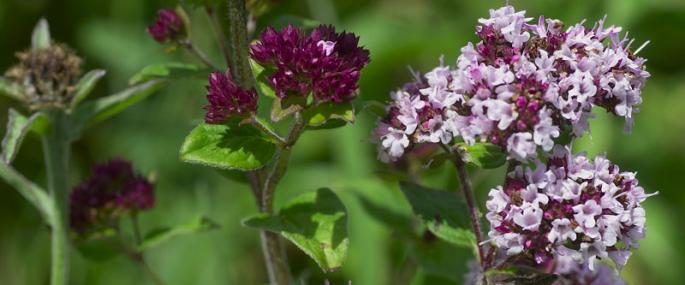Oregano is a classic and aromatic Mediterranean herb often used in cooking. But did you know that it's the same species as our Wild Marjoram? In the cooler climate of the UK, Wild Marjoram develops a slightly different scent, but it is still an excellent herb for use in the kitchen. It can be found growing on chalk and limestone grasslands in summer, its pinky flowers appearing between June and September.
Like many of our native plants, Wild Marjoram is an excellent source of nectar and pollen for all kinds of insects including bumblebees and butterflies. To encourage wildlife into your garden, try planting native flower species in your borders to provide a 'nectar-cafe'; if you plant herbs, use can also use them for your cooking! To find out more about wildlife-friendly gardening, visit our Wild About Gardens website: a joint initiative with the RHS, there's plenty of facts and tips to get you started.
